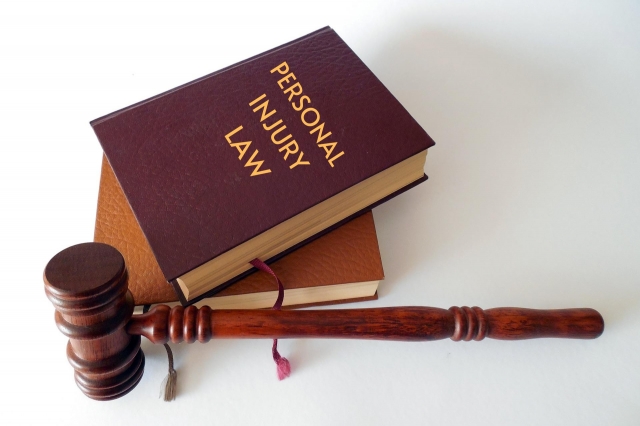If you or a loved one has been injured in an accident caused by anyone's negligence, you may be entitled to compensation for damages under personal injury law.
In such a case based on negligence, the plaintiff (victim) must prove that the defendant (at-fault party) was responsible for the accident and the injuries they suffered.
Why It's Important to Know the Elements of Personal Injury Law?
Although this sounds pretty straightforward, multiple factors can make it difficult for you to prove the claim, in the first place, and then get the compensation for the accident victim.
That's why it is important to know more about breach of duty and other elements of personal injury law. Whether it's a slip and fall, a car accident, or medical malpractice, the foundation of a successful personal injury claim lies in proving certain key elements. Understanding these elements can help you build a strong case and secure the compensation you deserve.
Here's what you need to know about the four elements of personal injury law that every victim must prove:
- The defendant owed the plaintiff a duty of care
- The defendant breached that duty
- The plaintiff was injured and suffered financial loss
- The defendant's breach caused the plaintiff's injuries
Let's get into details of each of them.
1. Duty of Care
The first element in a personal injury case is establishing that the defendant owed you a duty of care. This means that the person or entity had a legal obligation to act in a manner that would prevent harm to others.
For example, drivers have a duty to operate their vehicles safely to avoid causing accidents, while property owners must ensure their premises are free from hazards that could injure visitors.
Duty of care can vary depending on the circumstances, but the concept remains the same: the defendant had a responsibility to avoid actions or inactions that could foreseeably cause harm to others.
In most personal injury cases, proving the existence of a duty of care is a rather easy step, as it is often implied by the relationship between the parties involved. However, this is just the first step; the real challenge lies in proving that this duty was breached.
2. Breach of Duty
Once you've established that the defendant owed you a duty of care, the next element to prove is that this duty was breached.
There can be two types of breach of duty - by omission and commission.
Omission is when you negligently fail to perform a certain act that is required of you legally, whereas, commission is when you negligently perform a certain act that your duty forbids you from doing.
For instance, if a driver runs a red light and causes an accident, they have breached their duty of care by commission by not following traffic laws designed to keep everyone safe. Similarly, a manufacturer failing to maintain standard quality of product, leading to someone's injury, has breached their duty by omission to maintain a standard quality for its consumers.
To strengthen your case, it's essential to gather evidence that clearly demonstrates the breach of duty. This might include witness statements, surveillance footage, or expert testimony that shows how the defendant's actions (or inactions) fell short of what a reasonable person would have done in the same situation.
To know more about breach of duty and how it applies to your case, consulting with a personal injury law firm can provide valuable insights and guidance.
3. Causation
Proving causation is the third element of a personal injury case, and it's crucial for linking the defendant's breach of duty to your injuries. Causation under personal injury law involves showing that the defendant's actions directly caused your injury. This means that if it weren't for the defendant's breach of duty, you would not have been injured.
Causation is typically broken down into two parts: actual cause and proximate cause. Actual cause, also known as “but-for” causation, means that your injury would not have occurred but for the defendant's actions. Proximate cause, on the other hand, involves determining whether the injury was a foreseeable result of the defendant's conduct.
For example, if a distracted driver rear-ends your car and you suffer a whiplash injury, the driver's failure to pay attention is the actual cause of your injury. Proximate cause would involve determining whether the injury was a foreseeable consequence of the driver's negligence.
In some cases, causation can be complex, especially if there are multiple factors contributing to the injury. An experienced personal injury attorney can help you navigate these complexities and establish a clear link between the breach of duty and your injuries.
4. Damages
The final element you must prove in a personal injury case is damages. This involves demonstrating that you suffered actual harm as a result of the defendant's actions. Damages can take various forms, including physical injuries, emotional distress, financial losses, and more.
Under Georgia law, accident victims can file a civil lawsuit seeking damages that fall into three different categories:
i. Special Damages - includes medical cost, lost income, property damage.
ii. General Damages - includes but not limited to pain and suffering, permanent impairment or disability, emotional and psychological trauma, wrongful death, reputational damage, and loss of quality of life
iii. Punitive Damages - damages meant to punish the person responsible for an accident.
Each category refers to specific types of losses that may stem from an accident. And accident victims can seek damages that fall under any or all three categories.
How Can You Prove Your Damage?
To prove damages, you'll need to provide evidence that clearly shows the extent of your injuries and the impact they've had on your life. This might include medical records, receipts for out-of-pocket expenses, and testimony from medical professionals who can attest to the severity of your injuries.
If the case is too complicated, you need an expert to either identify the defendant's duty of care, establish their breach of duty, or both. For instance:
- An expert might explain how a defendant failed to meet a medical standard of care in a complex situation like surgery or medication errors.
- A specialist in design or engineering might show how defective products cause harm.
- A safety or engineering expert might help prove employer negligence by assessing adherence to safety standards.
Proving a personal injury case involves more than just showing that you were injured. You must establish that the defendant owed you a duty of care, breached that duty, caused your injury, and that you suffered damages as a result.
Each of these elements plays a critical role in the success of your claim. The goal is to demonstrate that you have been harmed in a way that warrants compensation.






